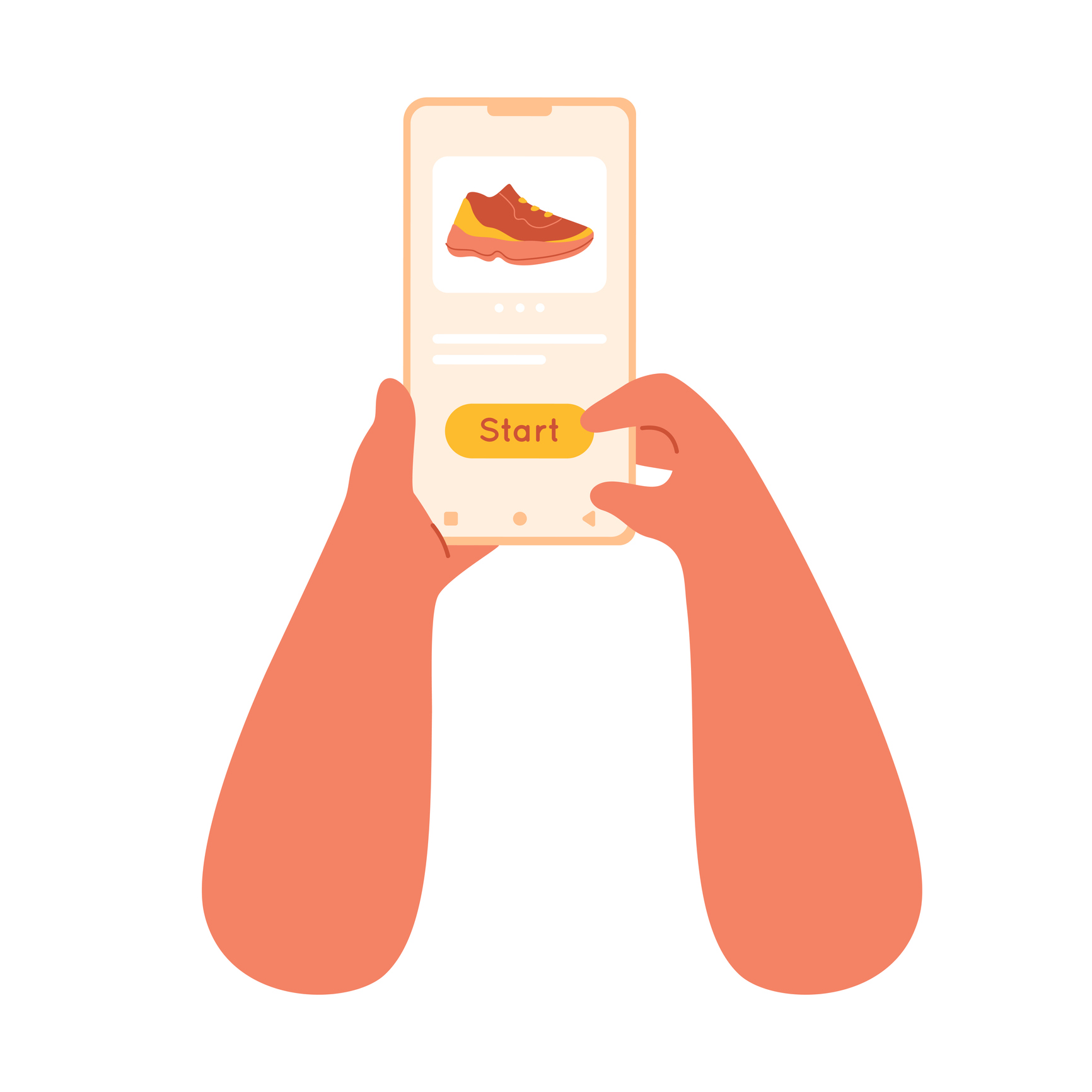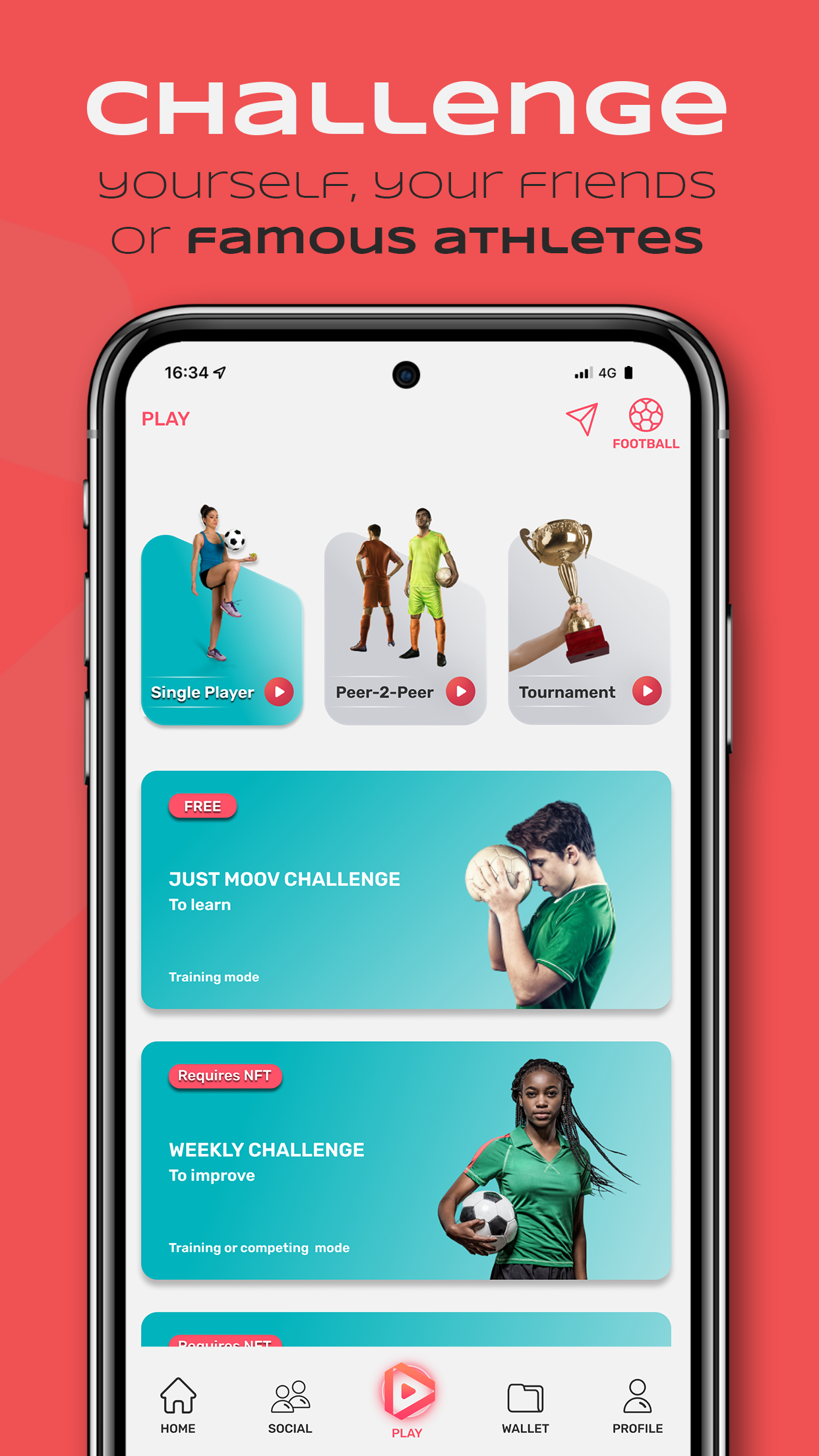
Some of us look at a treadmill, sigh dramatically, and declare: “You couldn’t pay me to go to the gym.” Others, however, can be bribed into working out with small amounts of obscure cryptocurrencies.
Those in the latter crowd are the target audience for move-to-earn apps, which reward users with cryptocurrency, non-fungible tokens (NFTs, which are unique digital tokens), or points (like the kind you earn with a credit card) in exchange for working out. On the app Sweatcoin, for example, users earn one cryptocurrency token—or Sweatcoin—for every 1,000 steps they take; these can be saved or redeemed for goods or services. Dozens of similar platforms exist, and the trend appears to be gaining traction: Olympic athlete Usain Bolt recently announced he’s partnering with soon-to-be-launched Step App, which will allow users to earn NFTs and cryptocurrency for physical activities like jogging or walking their dog.
RELATED: Treadmill Buying Guide
The concept gives new meaning to gains at the gym. “It’s a really novel way of motivating people to move, and it’s always great to be rewarded for exercise,” says Kevin Harris, a personal trainer based in Redondo Beach, Calif., who’s experimented with move-to-earn apps like Sweatcoin. “A lot of people would exercise more if they didn’t think they were losing out on something else, like working hours or time for rest and relaxation.” Financial incentives make fitness more appealing, he says.
Read More: The Man Behind Ethereum Is Worried About Crypto’s Future
More from TIME
Stefan Ateljevic, an entrepreneur based in Serbia, spent months using STEPN, which rewards exercise with crypto that can be cashed out or used to upgrade the app experience. During a time earlier this year when crypto demand outweighed supply, “I was earning upwards of $100 per day” in cryptocurrency, Ateljevic says. “The idea is brilliant because it forces people to get out of the house, a la Pokémon Go. Nothing is better for geeks, mentally and physically, than to get some proper exercise on a daily basis.” In addition to earning a decent amount of cryptocurrency, he says, he lost a few pounds and started to enjoy working out.
Move-to-earn apps that reward users in crypto put a new twist on an old concept. Researchers have long been interested in whether financial incentives for physical activity are effective, since just 23% of American adults do the federally recommended amount of aerobic and muscle-strengthening physical activity each week. “We have strong evidence they work,” says Katherine Milkman, a professor at the Wharton School of the University of Pennsylvania who specializes in behavioral economics and behavior change.
According to one meta-analysis published in 2013 in the American Journal of Preventive Medicine, financial incentives that ranged from about $2 to $46 per week increased exercise participation for up to six months and were particularly effective for sedentary adults. Other research has found that consistently making even tiny amounts—like one thousandth of a cent per step—led to increased physical activity.
A study published in 2021 in Nature found that tiny monetary rewards—like those collected via move-to-earn apps—can play an important role in motivating people to exercise. In the study, nearly 62,000 American gymgoers participated in various digital programs that encouraged exercise. Participants could earn small monetary rewards, like $1.75 worth of Amazon points for going to the gym, or 9 cents for returning to the gym after missing a workout. Almost half of these interventions were able to increase weekly gym visits at a rate that varied from 9% to 27%.
“When you’re already motivated to achieve some sort of goal, gamification seems to layer on extra motivation,” says Milkman, who co-authored the study. “That’s true even if you’re just earning points, and there’s literally no value. Even symbolic rewards work.”
Milkman predicts we’ll see more incentives for physical activity in the future, perhaps from health insurers. “Offering small rewards for something that’s so good for you and that should reduce costs seems like an obvious win,” she says.
Read More: A VR Interview With the Director Who Made “We Met in Virtual Reality”
But there’s a catch. Some cryptocurrency-based move-to-earn apps require an initial investment: You might need to spend a few hundred dollars for an NFT in the form of a “digital sneaker,” for instance. (Ateljevic recalls spending about $900 on STPN.) These purchases are one way that move-to-earn apps make money; the app creators also typically get a commission fee on all earned cryptocurrency.
Research indicates that putting your own money on the line actually deepens commitment. “We know that losses loom larger than gains,” Milkman says. “So I think it wouldn’t hurt, and it might even help.”
But crypto’s volatility makes these apps a gamble when it comes to forming a long-term exercise habit. For example, in May, demand for cryptocurrencies dipped, and Ateljevic sold the majority of his crypto and stopped using the app. Now, he works out “here and there”—but “when you’re getting paid in crypto to do it, it’s that much better.” Another downside to these apps is that most assume at least a certain savviness with cryptocurrency and technology. Those who want to try out move-to-earn apps will need a smartphone, perhaps a smartwatch, and maybe even a web3 wallet that makes it possible to store, send, and receive cryptocurrencies. Such obstacles all but ensure that these apps won’t be effective at getting a sizable chunk of the population to move more. “The more barriers you put up in front of someone, the more complicated you make something, the lower the usage and the lower the benefit,” Milkman says. That doesn’t mean these platforms aren’t beneficial, but rather, they may not be universally appealing—or effective.
If you’re interested in giving the concept a try, here’s what to know about three popular move-to-earn apps:

MetaGym
After spending more than 20 years in the fitness industry, including working as a personal trainer, Eddie Lester decided to merge his passion for helping people get in shape with his growing interest in cryptocurrency. The result is MetaGym, a futuristic tool launched in 2021 that rewards fitness, sleep, and meditation.
To get started, users are equipped with human-like NFT avatars that cost around $100 to $300 and are dubbed MetaGym Buddies. “It’s almost like your gym membership,” Lester says. “The purchase of the NFT grants you access to our platform, which has the earning mechanisms but also a ton of other benefits.”
After logging into the platform, you’ll connect the app to your smartwatch or other wearable fitness tracker, as well as to a web3 wallet. Once its earning mechanism launches in August, users who perform health activities—such as working out or meditating—will earn cryptocurrency tokens that can be used to purchase items like workout gear, or transferred out for cash.
For example, logging one cardio workout would equate to about 40 “heart rate tokens” or $2-$3, while a resistance-training workout would yield 20 tokens or $1-$2. Getting a great night of sleep would bring in another $1-$2. (Lester points out that since cryptocurrency values fluctuate, these numbers could trend upwards or downwards.)
“There’s obviously the benefit of getting a financial incentive to perform a health behavior—that’s motivating,” Lester says. “But what I’m most excited about is the communities we’re building. MetaGym is so heavily focused on social support to help people form healthy behaviors and develop friendships,” including through a Discord server that users regularly use to converse.

Sweatcoin
Anton Derlyatka—the co-founder and CEO of Sweatcoin—thinks of his app as the tokenization of movement. It’s a free program that uses movement-verification technology to track daily steps (which means that cheating the system by, say, shaking your phone up and down won’t work).
When he launched Sweatcoin—which Derlyatka says now has more than 100 million registered users—he was determined to build a product that was accessible to people of all fitness levels. His mom, who’s 86 and only walks a few hundred steps a day, serves as his litmus test. If she can use the app, he says, anyone can: “The entry barriers are really low.”
For every 1,000 steps, users earn 1 sweatcoin (minus a 5% commission fee that goes to the app). These tokens are like credit card points that can be redeemed for products, services, or coupons, or donated to charity. For example, 2 coins might unlock a $5 Amazon voucher; 10 coins grant access to a 20% discount on Garmin smartwatches. On a recent afternoon, a user participating in one of the app’s auctions bid more than 32,000 coins to secure a 65-inch smart TV.
In September, Sweatcoin plans to debut a cryptocurrency called $SWEAT. Users will have the choice of hanging onto their sweatcoins, or converting them into a blockchain-powered cryptocurrency.
“The whole idea is, how do we capture the value of physical activity?” Derlyatka says. “Because once we’ve done that, and we share it back with the user, it becomes a habit.”

Dotmoovs
Pedro Rente Lourenço’s background is in biomedical engineering, and he’s long been interested in how to improve sports performance. After studying artificial intelligence, he co-founded Dotmoovs, a peer-to-peer sports competition app powered by the blockchain. An AI algorithm allows the app to score all workouts within a few minutes.
To get started, users download a free app and get acquainted with the program by watching videos of other people performing challenges. “They’ll see the analyzed videos with our little dots or stick figures on top of people, and they’ll see their scores and get a feel for what they should expect,” Rente Lourenço says. Then, you can select whether you want to play freestyle football (soccer to those in the U.S.) or dance, and do a solo challenge up to three times per day.
Using more advanced versions of the app requires either buying or renting an NFT. Once you have one, you can challenge other players (either real-life friends or internet strangers) to football or dance competitions that are recorded on your phone. The winner is awarded a pool of $MOOV tokens, which are a cryptocurrency that can be saved up, cashed out, or used to purchase additional NFTs or other prizes. If you rented your NFT for free, you’ll share a portion of your profits with the person who owns it.
“We didn’t want to create another app just for crypto-savvy people,” Rente Lourenço says. “The idea here is that everyone likes to dance, and everyone will want to play football. And then if you do foray into crypto, you can earn more tokens and get more rewards and it’s more exciting—but we don’t want to create that barrier to entry.”
More Must-Reads from TIME
- Cybersecurity Experts Are Sounding the Alarm on DOGE
- Meet the 2025 Women of the Year
- The Harsh Truth About Disability Inclusion
- Why Do More Young Adults Have Cancer?
- Colman Domingo Leads With Radical Love
- How to Get Better at Doing Things Alone
- Michelle Zauner Stares Down the Darkness
Contact us at letters@time.com